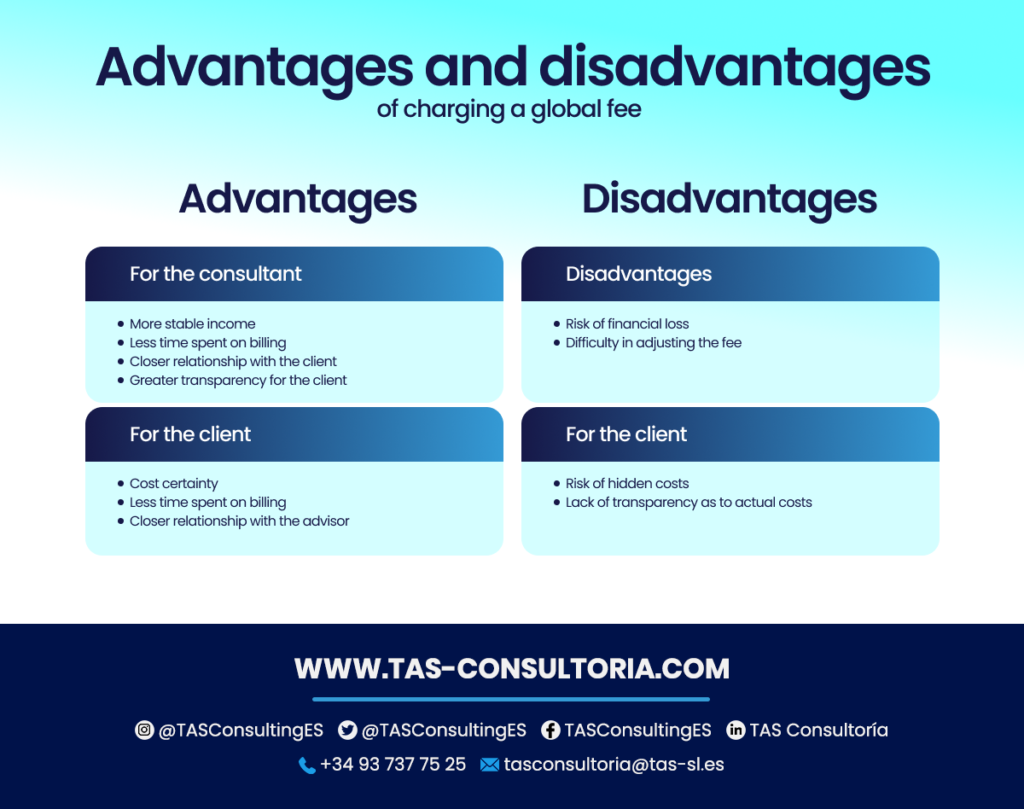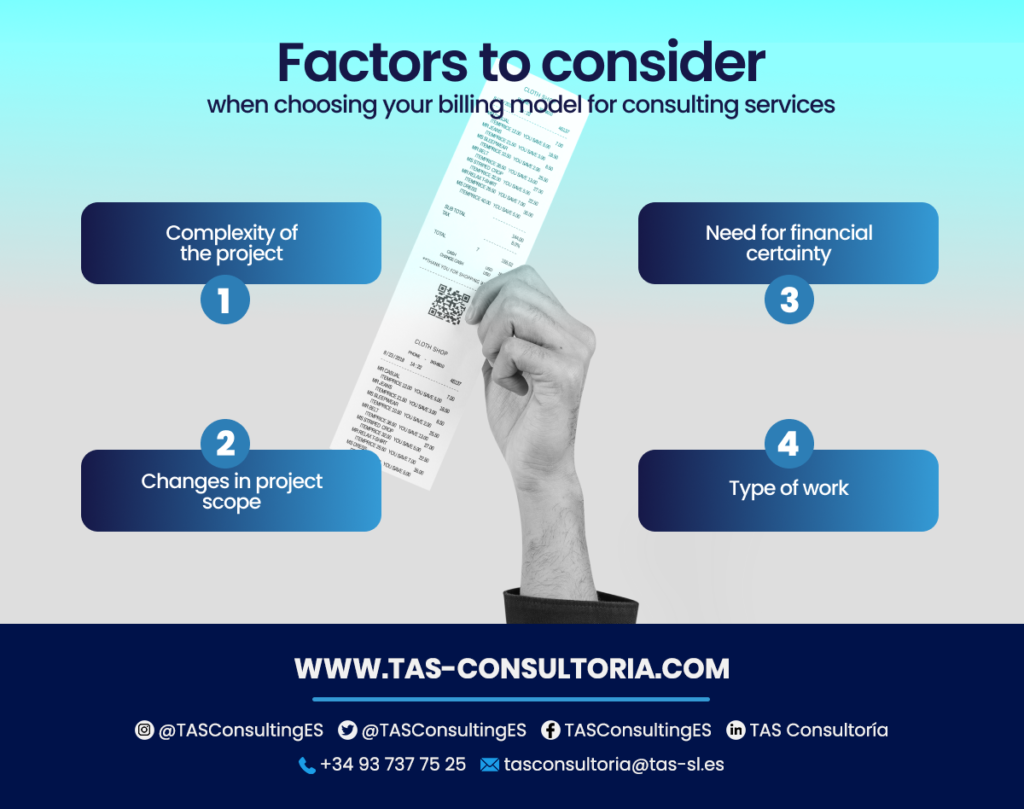
When it comes to charging for your services as a consultant, the question may arise as to whether it is better to charge a global fee or full-service billing. In this article we will explore the differences between full service billing and flat fee billing to help you choose the best option for your business. Read on and make a profitable decision!
What is involved in a global fee for consulting services to clients?
A flat fee is a fixed amount you charge for the entire consulting service you provide to the client, regardless of the time invested or the complexity of the work performed.
To calculate this billing model you must consider several factors, such as the consultant’s experience, the scope and complexity of the project, the estimated time to complete the work and the costs associated with the service.
The global fee should be clearly presented to the client at the outset of the consulting relationship. It is important to explain the scope of work included in the global fee and any exclusions or limitations that may apply. What advantages or disadvantages does it offer for both you, who are the advisor, and your client? You can see some key factors below:

You may also be interested in: Taking out insurance for foreigners in Spain
What is involved in full-service billing for customer advisory services?
Charging a full-service billing implies offering clients a complete package of services covering all the consulting needs they may have. Contrary to the global fee, this type of billing can include everything from the assessment of your current situation to the design of an action plan and its implementation.
In contrast to the flat fee, full-service billing is calculated based on the scope of work agreed with the client. In general, a fixed price is established for the full service, which is based on an estimate of the time and resources required to complete the project. The price may also include the costs associated with any tools or technology used in providing the service.
In the same way as the flat rate, it is important that you present the full service billing to the customer in a clear and detailed manner. It should include a detailed description of the services included, the expected delivery time and any exclusions or limitations that may apply.
You must also provide information about the invoicing process and any payments required to initiate the project.
Sometimes you can offer special rates for clients who manage social or collective projects, which can help boost their projects and generate brand recognition. An aspect that the global rate does not offer. In addition, it is common to adjust prices according to factors such as payment risk, resources needed, scope of work, urgency required and exclusivity agreements.
However, it is a mistake to charge a customer more simply because of its size, as this could be perceived as a case of overcharging without rational justification.
You may also be interested in: Why are corporate bylaws important?
What is the best option: flat fee or full-service billing when providing consulting services to your clients?
The choice between flat fee and full service billing depends on several factors. Therefore, it is important to carefully evaluate and choose the option that best suits the needs of your client and you as a consultant.
Below is a comparison between flat rate and full service billing, along with situations in which one option may be more appropriate than the other:

Complexity of the project
If the project is complex and it is difficult to determine the scope and time of work, full-service billing may be a better option, as it provides greater flexibility in the amount of time spent on the project.
On the other hand, if the project is relatively simple and the scope can be easily determined, the lump sum fee may be a good option because it provides a predictable and easy-to-understand cost structure.
Changes in project scope
If you expect the scope of the project to change significantly, full-service billing may be more appropriate, as it allows you to adjust costs as requirements change. On the other hand, if you believe the scope of the project will be stable and well-defined, the global fee may be more appropriate, as it provides a clear and consistent cost structure.
Need for financial certainty
If your client needs financial certainty and wants to know exactly how much the project will cost, the flat fee may be a good option. On the other hand, if the client prefers a more flexible cost structure and is willing to pay for changes in the scope of the project, full-service billing may be more appropriate.
Type of work
Depending on the type of work being performed, one option may be more appropriate than the other. For example, if it is a business consulting job that requires a great deal of research and analysis, full-service billing may be more appropriate. On the other hand, if it is a more technical job that can easily be broken down into phases, the lump sum fee may be a good option.
You may also be interested in: How to register a trade name in Spain?
The choice between full-service billing and flat fee billing depends on several factors, such as the nature of the project, the relationship with the client, and the level of uncertainty in the scope of work.
It is important to carefully consider these variables before deciding which is the best option for your consulting business. If you have questions or need help setting up the right billing model, whether it’s a flat fee or full service, don’t hesitate to contact us. Our team of consulting experts can help you make an informed decision that is best for you and your business – contact us today!




Your email address will not be published .
Required fields are marked with *